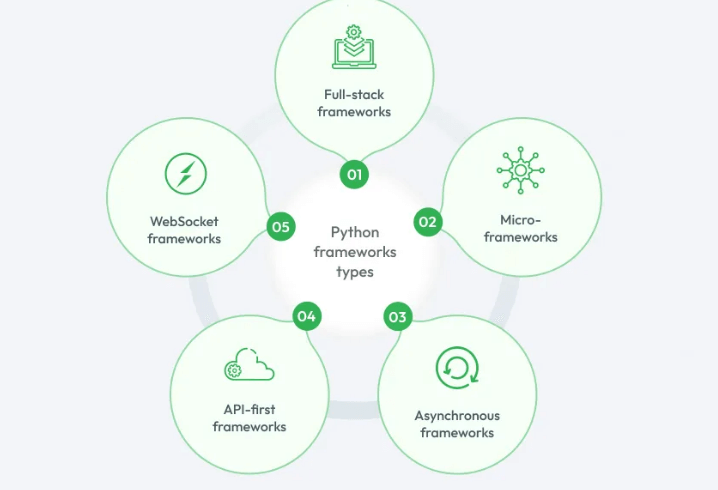
Python Frameworks for Scalable and Maintainable Testing
Testing is an essential part of the software delivery lifecycle. In the current digital world, applications are being integrated more frequently, with more complexity and detail than ever before, making testing harder to keep up with. Simply having checks is inadequate; you need testing practices that are flexible and can expand with the software, as well as be easily maintainable. This is where Python frameworks help us. They provide structure, flexibility, and power, enabling teams to create test automation that balances speed and long-term quality.
In this blog, we will discuss the importance of Python frameworks in more detail, how they support scalable and maintainable testing in the modern software landscape, and what options are available today.
The Growing Importance of Scalable Testing
Software development industry is changing more rapidly than ever. Lots of teams release updates weekly—and even daily. Every change needs to be tested properly, and manual testing is inadequate to keep up with the demands.
Scalable testing enables the test suite to keep pace as the application increases in features, platforms and data without a decline in speed. Maintainable testing helps ensure that tests that report a risk remain relevant and able to track the risk as the software evolves.
Scalability and maintainability combined make testing an asset. They help teams to proceed fast, minimize risks, and provide a consistent quality to users. Even the latest testing tools can become ineffective and become obsolete without them.
.
Why Use Python for Testing?
Python is usually the go-to language for the developers and testers who want to create automated test solutions. But why so?
- Readability: The syntax of Python is simple and looks like common English. Testers having minimal programming knowledge can start writing and maintaining test scripts in a short time.
- Community Support: Python counts among the top developer communities in the world. It has regular updates, new tools, and a lot of help whenever it is needed.
- Cross-Platform: Python can be deployed on any major OS. Thus, it is very convenient to test applications in different environments.
- Rich Ecosystem: Python supports all types of testing: web, API, performance, mobile, etc.
- Integration Ability: Python integrates readily with CI/CD tools.
Due to such benefits, Python can be used as a very strong base for building testing frameworks that can fulfill the present-day requirements of scalability and maintainability.
Understanding Testing Frameworks
Before going straight to the Python options, it will be great if we take a step back and get to know a bit about the testing framework.
A testing framework is more than just a library or a set of tools. It is an organized way of creating and managing tests. Typically, a framework provides:
- Structure: Gives a defined way to write, organize, and execute tests.
- Reusability: Common functions and resources can be employed in multiple test cases.
- Reporting: Shows which test case passed, which failed, or need to be checked further.
- Integration: Allows integrated cooperation with build and deployment pipelines.
To summarize, frameworks give teams the necessary discipline and effectiveness that are critical when dealing with large and complex applications.
Popular Python Frameworks for Testing
When evaluating Python frameworks for testing, several established options are available. They provide distinct strengths, and the selection often depends on application requirements, team expertise and project scale. Let’s review the most used ones.
Pytest
Pytest can be considered the most popular Python testing framework. Even though it is quite simple to use, it can also provide the required power for complex testing scenarios.
Key features:
- Easy-to-read test syntax.
- Supports fixtures that allow for reusability of code.
- Plugins for parallel execution, coverage, and reporting.
- Pytest is efficient with both small unit and large functional test suites.
Pytest is flexible and can run both small unit tests and large test suites. It works well for long-term projects.
Unittest
Unittest is Python’s native testing framework. Unittest has a long history and is inspired by Java’s JUnit and is still used by many.
Key features:
- It is already included with Python, so you don’t need to install anything.
- Offers test case classes and assertions.
- Is suitable for unit-level testing.
Unittest may feel a bit more verbose compared to Pytest. However, its reliability and being part of the Python standard library make it a preferred choice by many organizations.
Robot Framework
Robot Framework is a keyword-driven testing framework that is perfect for acceptance testing and Acceptance Test-Driven Development (ATDD).
Key features:
- It’s keyword-driven, so non-programmers can participate in writing tests.
- It has rich reporting capabilities with clear logs.
- It has a huge library available for web, API testing, and database testing.
- It also can integrate with tools like Selenium, Appium, and Jenkins.
Robot Framework is great for a cross-functional team where a business analyst or stakeholder contributes to writing or reviewing test cases.
Behave
Behave is a framework for Behavior-Driven Development (BDD). You can create tests in a plain language style by utilizing the Gherkin syntax.
Key points:
- Tests are composed in a clear, concise and easily comprehensible language style.
- Promotes teamwork among developers, testers, and non-technical participants.
- Allows the compatibility with other testing libraries for integration.
BDD frameworks such as Behave are the right tools to bring the technical teams in line with the business needs, thereby ensuring that what is tested is exactly what the stakeholders expect.
Scalable Testing with Python Frameworks
To scale testing means not only running more test cases. This also includes:
- Parallel Execution: Concurrently run tests to reduce the test time.
- Cross-platform Testing: It verifies application behavior on various different devices, operating environments, and browsers.
- CI/CD Integration: Enables automated test execution immediately after code commits, ensuring rapid feedback in delivery pipelines.
- Data-Driven Testing: Tests are performed on a large variety of input data.
These Python frameworks support scalability in many different ways. For instance, Pytest has plugins to enable parallel execution.
LambdaTest integrates seamlessly with Python-based testing frameworks like Selenium, Playwright, and Pytest. Its cloud infrastructure allows for parallel execution of tests across a wide range of browsers and devices, enhancing scalability.
The platform’s SmartUI offers visual regression testing, ensuring UI consistency. LambdaTest’s AI Agents assist in maintaining test scripts by auto-healing broken locators and identifying flaky tests. These capabilities enable teams to build scalable and maintainable test suites that can adapt to evolving application requirements.
See also: ChatGPT for Test Automation: Opportunities and Limitations
Maintainability in Python Test Frameworks
Maintaining effective test suites is one of the hardest challenges in long-term software projects. A test framework should facilitate:
- Readable Test Cases: Test cases should be easy for new team members to read and understand.
- Reusable Class: Tests should be able to reuse fixtures, libraries, or keywords, which can significantly reduce duplicates.
- Explicit Reporting: Test case failures should be explicitly outlined in the report, stating that the failure should be investigated and oriented towards what could be the cause of the failure.
- Stable Integrations: Tests should consistently execute as expected when integrated with different tools such as Selenium or CI/CD pipelines.
As an example, fixtures in Pytest grant the users the ability to reuse parts of the code, which in turn reduces the duplication of the setup and teardown code. Moreover, in Robot Framework, the maintainability of tests is ensured by the keyword-driven tests that provide a higher level of abstraction for the implementation details from the test logic.
Selenium with Python
It is nearly impossible to mention Python testing frameworks without referencing Selenium. Selenium is a tool that is most prevalently used for web automation testing, and Python is very compatible with it.
Many people want to know what is Selenium WebDriver. Selenium WebDriver is the main component of Selenium, and it allows direct interaction with a web browser. It gives a programming interface to build and run test cases and to manipulate elements on web pages like a real user would: clicking links, entering text, and confirming a web application functions as expected.
Selenium WebDriver is continuously used for automating web applications and is typically used along with Python frameworks like Pytest and Robot Framework for web automation scripts.
Finding the right Python Framework
Choosing a framework depends on the goals of testing and the team setup. Here are some of the considerations.
- For unit tests: Unittest or Pytest.
- For functional and integration tests: Pytest, Robot Framework or Behave.
- For Behavior-Driven Development: Behave.
- For keyword-driven acceptance tests: Robot Framework.
You should also consider:
- Team’s experience level
- Complexity of application.
- Scalability demand (parallel execution, CI/CD).
- Cooperative engagement with non-technical partners.
- Complications with Scaling Testing with Python Frameworks
Challenges in Scaling Testing with Python Frameworks
Even with robust frameworks, some challenges teams have with scaling are:
- Test execution: Large test suites can run for hours if they are not carefully optimized.
- Flaky tests: Inconsistent results from timing issues or an unstable environment can pose challenges.
- Infrastructure needs: Running thousands of tests, you may need cloud-based grids.
- Maintenance burden: Without careful design, test cases can go stale very quickly.
To overcome these challenges, teams make use of cloud-based testing platforms, implement robust test design strategies, and develop reporting solutions that enhance the speed of debugging.
Best Practices for Scalable and Maintainable Testing
- Maintain Independent Tests: Design them to run in isolation without depending on shared state or prior executions.
- Reuse Components: Share fixtures and libraries to minimize duplication and ease updates.
- Parallel Execution: Run Tests side by side to reduce the execution time.
Conclusion
Building a scalable and maintainable test suite is really necessary due to the fast development cycle that has become a standard in the software industry. The use of Python frameworks gives the required flexibility, ease, and support from the ecosystem to be able to meet such demands. Regardless of Pytest, Robot Framework, or Behave—each of these provides different capabilities in creating dependable and scalable tests.
Integration with tools such as Selenium WebDriver makes it possible for team members to deliver quality software at a high pace. The correct selection of a framework together with the concentration on scalability will turn testing into a long-term investment.




